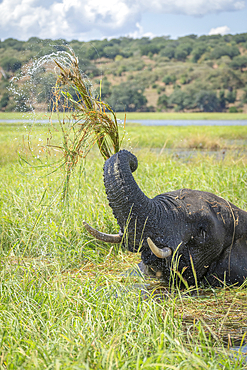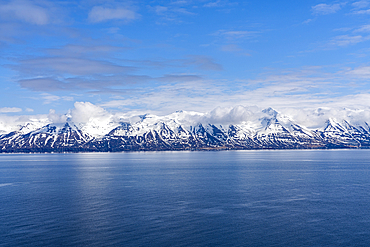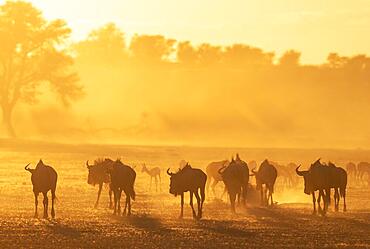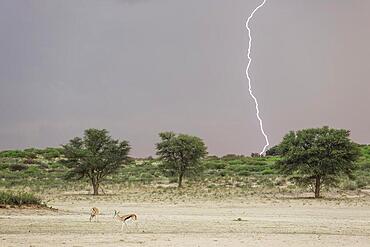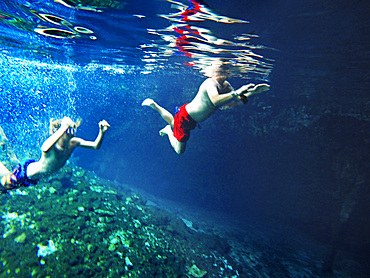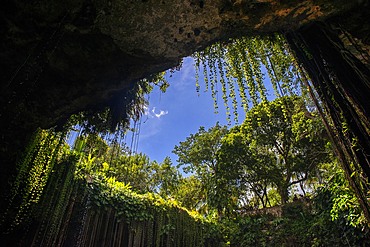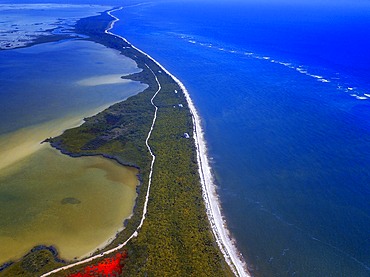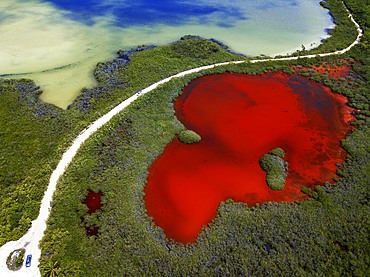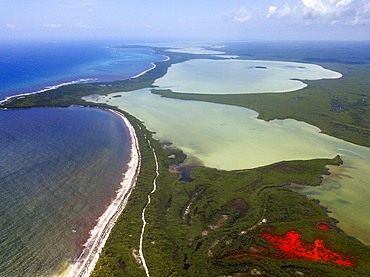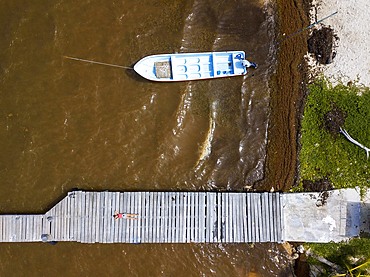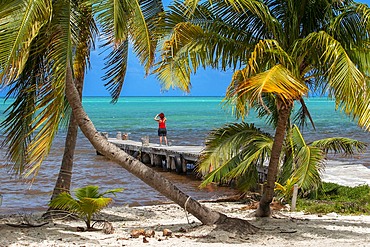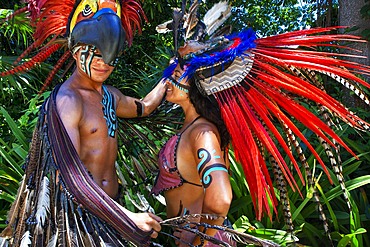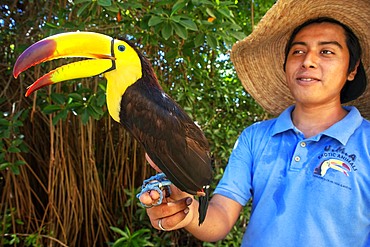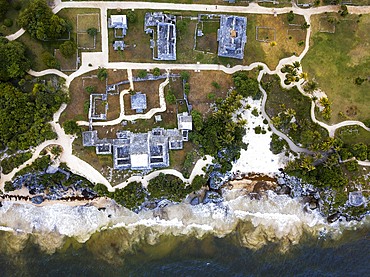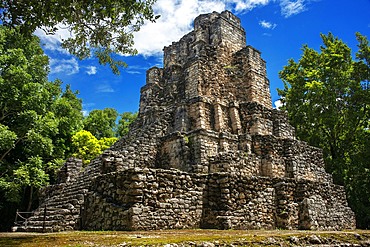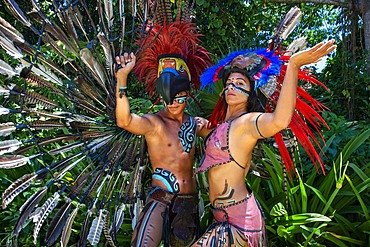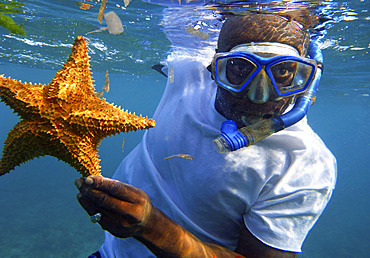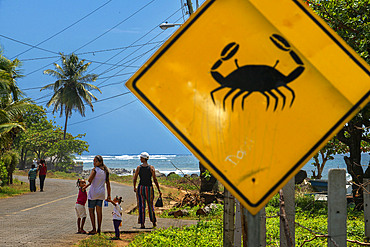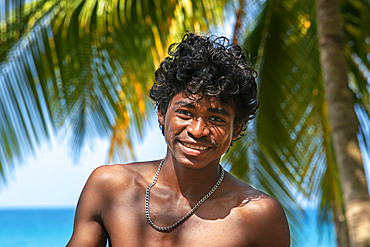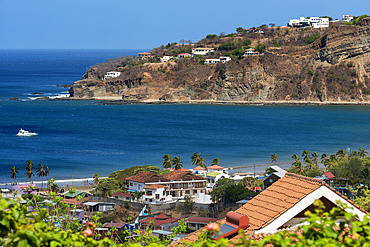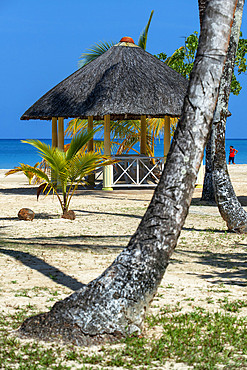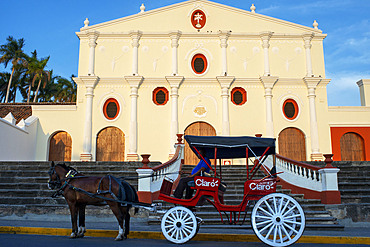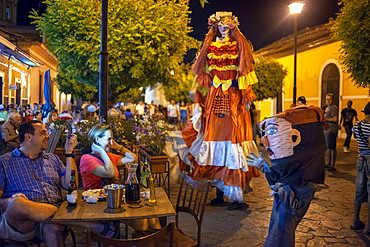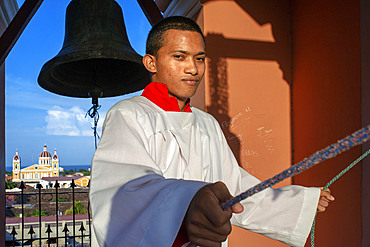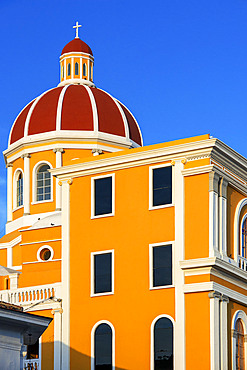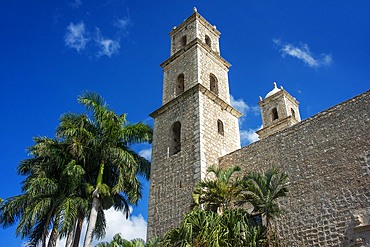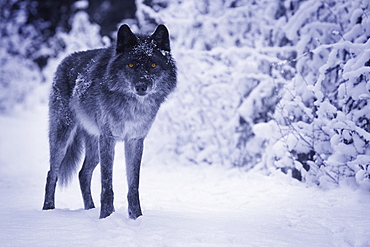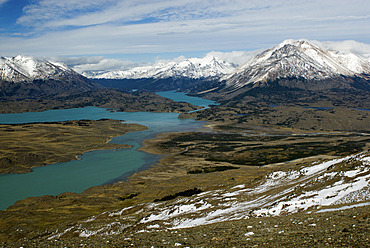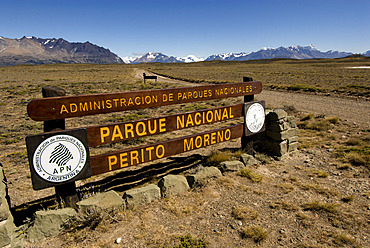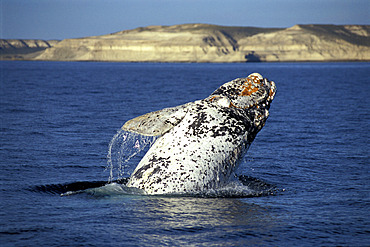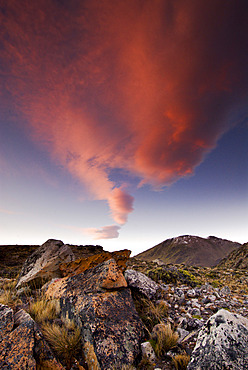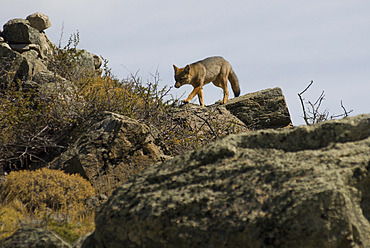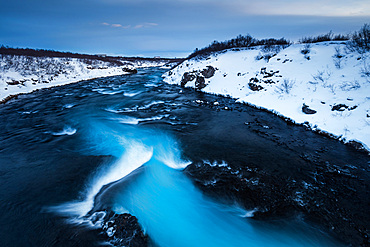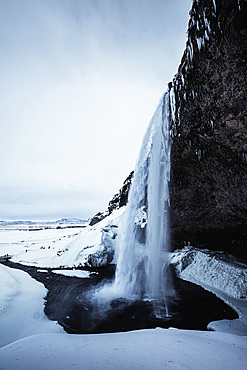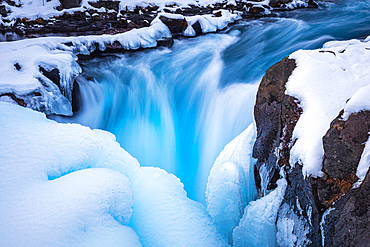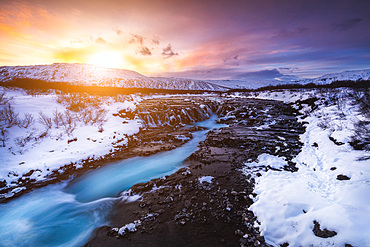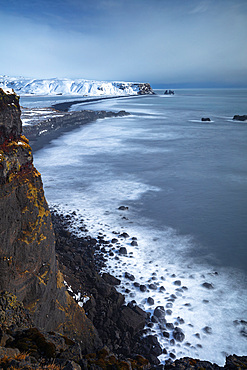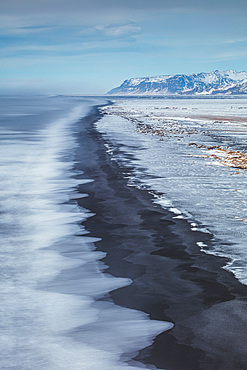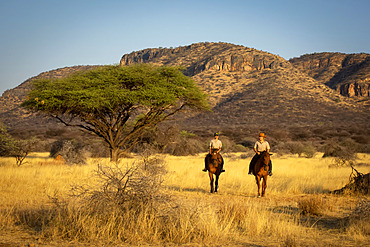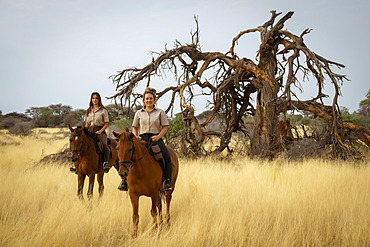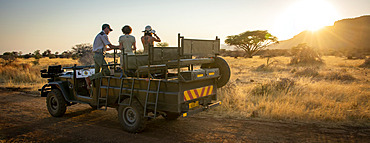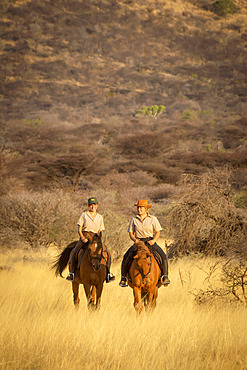Recent searches
Loading...
1116-52837 - African bush elephant (Loxodonta africana) in the water washing and lifting river grass with its trunk and tusks in Chobe National Park, Chobe, North-West, Botswana
1116-52774 - Wooden arches and building of the recreated Tjodhilde Church in Greenland's Brattahlid, Eriksfjord area, part of a reconstruction of Erik the Red's settlement, Kujataa World Heritage Site, Qassiarsuk, Southern Greenland, Greenland
1116-52749 - The beautiful snow-capped mountains of the North Fjords in North Iceland with a bright, blue sky above them, North Iceland, Iceland
832-403356 - Blue Wildebeest (Connochaetes taurinus) . Herd at sunrise. Behind them a group of springbok (Antidorcas marsupialis) . Kalahari Desert, Kgalagadi Transfrontier Park, South Africa, Africa
832-403346 - Springbok (Antidorcas marsupialis) . In the dry bed of the Nossob river. During the rainy season with thunderstorm and lightning. Kalahari Desert, Kgalagadi Transfrontier Park, South Africa, Africa
832-403345 - Springbok (Antidorcas marsupialis) . In the dry bed of the Nossob river. During the rainy season with thunderstorm and lightning. Kalahari Desert, Kgalagadi Transfrontier Park, South Africa, Africa
832-402268 - Foiling kiteboarding kitesurfing kiteboarder (kitesurfer) silhouette in the Atlantic ocean on sunset. Fonte da Telha beach, Costa da Caparica, Portugal, Europe
1350-6636 - Aerial view of Mayan Ruin of Chichen Itza Archaeological Site Yucatan Peninsula, Quintana Roo, Caribbean Coast, Mexico
1350-6635 - Aerial view of Mayan Ruin of Chichen Itza Archaeological Site Yucatan Peninsula, Quintana Roo, Caribbean Coast, Mexico
1350-6630 - Swimming at Cenote Ik Kil in Yucatan, Mexico, a natural pit, or sinkhole near Chichen Itza. Yucatan Peninsula, Quintana Roo, Mexico. Ik Kil was sacred to the Mayans who used this cenote for both relaxation and ritual services centuries ago.
1350-6633 - Gran Cenote de Tulum in Yucatan Peninsula, Quintana Roo, Mexico. There are thousands of cenotes dotted all over Mexico���s Yucatan Peninsula, and their existence is as much a defining characteristic of the region as is the distinct geological feature from which they result. Once revered by the ancient Mayans as sacred wells, they are now magnets for tourists, adventurers, and explorers alike.
1350-6628 - Cenote Ik Kil in Yucatan, Mexico, a natural pit, or sinkhole near Chichen Itza. Yucatan Peninsula, Quintana Roo, Mexico. Ik Kil was sacred to the Mayans who used this cenote for both relaxation and ritual services centuries ago.
1350-6627 - Aerial view of Punta Allen Sian Ka'an Reserve, Yucatan Peninsula, Mexico. Red lagoon near Boca Paila Bridge.
In the language of the Mayan peoples who once inhabited this region, Sian Ka'an means Origin of the Sky. Located on the east coast of the Yucatán peninsula, this biosphere reserve contains tropical forests, mangroves and marshes, as well as a large marine section intersected by a barrier reef. It provides a habitat for a remarkably rich flora and a fauna comprising more than 300 species of birds, as well as a large number of the region's characteristic terrestrial vertebrates, which cohabit in the diverse environment formed by its complex hydrological system.
Along its roughly 120 kilometres of coastline, the property covers over 400,000 hectares of land ranging from sea level to only ten m.a.s.l. The property boasts diverse tropical forests, palm savannah, one of the most pristine wetlands in the region, lagoons, extensive mangrove stands, as well as sandy beaches and dunes. The 120,000 hectares of marine area protect a valuable part of the Mesoamerican Barrier Reef and seagrass beds in the shallow bays. The lush green of the forests and the many shades of blue of the lagoons and the Caribbean Sea under a wide sky offer fascinating visual impressions.
1350-6623 - Aerial view of Punta Allen Sian Ka'an Reserve, Yucatan Peninsula, Mexico. Red lagoon near Boca Paila Bridge.
In the language of the Mayan peoples who once inhabited this region, Sian Ka'an means Origin of the Sky. Located on the east coast of the Yucatán peninsula, this biosphere reserve contains tropical forests, mangroves and marshes, as well as a large marine section intersected by a barrier reef. It provides a habitat for a remarkably rich flora and a fauna comprising more than 300 species of birds, as well as a large number of the region's characteristic terrestrial vertebrates, which cohabit in the diverse environment formed by its complex hydrological system.
Along its roughly 120 kilometres of coastline, the property covers over 400,000 hectares of land ranging from sea level to only ten m.a.s.l. The property boasts diverse tropical forests, palm savannah, one of the most pristine wetlands in the region, lagoons, extensive mangrove stands, as well as sandy beaches and dunes. The 120,000 hectares of marine area protect a valuable part of the Mesoamerican Barrier Reef and seagrass beds in the shallow bays. The lush green of the forests and the many shades of blue of the lagoons and the Caribbean Sea under a wide sky offer fascinating visual impressions.
1350-6625 - Aerial view of Punta Allen Sian Ka'an Reserve, Yucatan Peninsula, Mexico. Red lagoon near Boca Paila Bridge.
In the language of the Mayan peoples who once inhabited this region, Sian Ka'an means Origin of the Sky. Located on the east coast of the Yucatán peninsula, this biosphere reserve contains tropical forests, mangroves and marshes, as well as a large marine section intersected by a barrier reef. It provides a habitat for a remarkably rich flora and a fauna comprising more than 300 species of birds, as well as a large number of the region's characteristic terrestrial vertebrates, which cohabit in the diverse environment formed by its complex hydrological system.
Along its roughly 120 kilometres of coastline, the property covers over 400,000 hectares of land ranging from sea level to only ten m.a.s.l. The property boasts diverse tropical forests, palm savannah, one of the most pristine wetlands in the region, lagoons, extensive mangrove stands, as well as sandy beaches and dunes. The 120,000 hectares of marine area protect a valuable part of the Mesoamerican Barrier Reef and seagrass beds in the shallow bays. The lush green of the forests and the many shades of blue of the lagoons and the Caribbean Sea under a wide sky offer fascinating visual impressions.
1350-6620 - Aerial view of Punta Allen Sian Ka'an Reserve, Yucatan Peninsula, Mexico. Red lagoon near Boca Paila Bridge.
In the language of the Mayan peoples who once inhabited this region, Sian Ka'an means Origin of the Sky. Located on the east coast of the Yucatán peninsula, this biosphere reserve contains tropical forests, mangroves and marshes, as well as a large marine section intersected by a barrier reef. It provides a habitat for a remarkably rich flora and a fauna comprising more than 300 species of birds, as well as a large number of the region's characteristic terrestrial vertebrates, which cohabit in the diverse environment formed by its complex hydrological system.
Along its roughly 120 kilometres of coastline, the property covers over 400,000 hectares of land ranging from sea level to only ten m.a.s.l. The property boasts diverse tropical forests, palm savannah, one of the most pristine wetlands in the region, lagoons, extensive mangrove stands, as well as sandy beaches and dunes. The 120,000 hectares of marine area protect a valuable part of the Mesoamerican Barrier Reef and seagrass beds in the shallow bays. The lush green of the forests and the many shades of blue of the lagoons and the Caribbean Sea under a wide sky offer fascinating visual impressions.
1350-6616 - Aerial view of Punta Allen Sian Ka'an Reserve, Yucatan Peninsula, Mexico.
In the language of the Mayan peoples who once inhabited this region, Sian Ka'an means Origin of the Sky. Located on the east coast of the Yucatán peninsula, this biosphere reserve contains tropical forests, mangroves and marshes, as well as a large marine section intersected by a barrier reef. It provides a habitat for a remarkably rich flora and a fauna comprising more than 300 species of birds, as well as a large number of the region's characteristic terrestrial vertebrates, which cohabit in the diverse environment formed by its complex hydrological system.
Along its roughly 120 kilometres of coastline, the property covers over 400,000 hectares of land ranging from sea level to only ten m.a.s.l. The property boasts diverse tropical forests, palm savannah, one of the most pristine wetlands in the region, lagoons, extensive mangrove stands, as well as sandy beaches and dunes. The 120,000 hectares of marine area protect a valuable part of the Mesoamerican Barrier Reef and seagrass beds in the shallow bays. The lush green of the forests and the many shades of blue of the lagoons and the Caribbean Sea under a wide sky offer fascinating visual impressions.
1350-6615 - Palms and old pier in Punta Allen Sian Ka'an Reserve, Yucatan Peninsula, Mexico.
In the language of the Mayan peoples who once inhabited this region, Sian Ka'an means Origin of the Sky. Located on the east coast of the Yucatán peninsula, this biosphere reserve contains tropical forests, mangroves and marshes, as well as a large marine section intersected by a barrier reef. It provides a habitat for a remarkably rich flora and a fauna comprising more than 300 species of birds, as well as a large number of the region's characteristic terrestrial vertebrates, which cohabit in the diverse environment formed by its complex hydrological system.
Along its roughly 120 kilometres of coastline, the property covers over 400,000 hectares of land ranging from sea level to only ten m.a.s.l. The property boasts diverse tropical forests, palm savannah, one of the most pristine wetlands in the region, lagoons, extensive mangrove stands, as well as sandy beaches and dunes. The 120,000 hectares of marine area protect a valuable part of the Mesoamerican Barrier Reef and seagrass beds in the shallow bays. The lush green of the forests and the many shades of blue of the lagoons and the Caribbean Sea under a wide sky offer fascinating visual impressions.
1350-6611 - Underwater close up view of open coral polyp during a dive, Cancun, Quintana Roo, Mexico
1350-6608 - Mexican aztec dress gods at Grand Palladium White Sand Resort and Spa in Riviera Maya, Yucatan Peninsula, Quintana Roo, Caribbean Coast, Mexico.
Aztec clothing was generally loose fitting and did not completely cover the body. When the Spanish arrived in Mexico, the people were surprised to see them in their full armour, with only their faces exposed.
Aztec clothes were generally made of cotton (which was imported) or ayate fiber, made from the Maguey Cactus (also called the Century Plant or American Aloe). Women would weave the fibers into clothing, a task girls were taught as young teenagers. Because of their vast trading network, the Aztecs were able to make use of a beautiful array of dyes, creating the brilliant
1350-6609 - Kayakking in front of the beach of Grand Palladium White Sand Resort and Spa in Riviera Maya, Yucatan Peninsula, Quintana Roo, Caribbean Coast, Mexico
1350-6606 - A Mexican staff member holds a tucan at Grand Palladium White Sand Resort and Spa in Riviera Maya, Yucatan Peninsula, Quintana Roo, Caribbean Coast, Mexico
1350-6602 - Aerial view of Grand Palladium White Sand Resort and Spa in Riviera Maya, Yucatan Peninsula, Quintana Roo, Caribbean Coast, Mexico
1350-6597 - Aerial views of El Castillo and the Ruins of the Mayan temple grounds at Tulum, Quintana Roo, Yucatan, Mexico. Tulum is the site of a pre-Columbian Mayan walled city which served as a major port for Coba, in the Mexican state of Quintana Roo. The ruins are situated on 12 meter 39 ft tall cliffs along the east coast of the Yucatán Peninsula on the Caribbean Sea in the state of Quintana Roo, Mexico. Tulum was one of the last cities built and inhabited by the Maya; it was at its height between the 13th and 15th centuries and managed to survive about 70 years after the Spanish began occupying Mexico. Old World diseases brought by the Spanish settlers appear to have resulted in very high fatalities, disrupting the society, and eventually causing the city to be abandoned.
1350-6599 - Aerial views of El Castillo and the Ruins of the Mayan temple grounds at Tulum, Quintana Roo, Yucatan, Mexico. Tulum is the site of a pre-Columbian Mayan walled city which served as a major port for Coba, in the Mexican state of Quintana Roo. The ruins are situated on 12 meter 39 ft tall cliffs along the east coast of the Yucatán Peninsula on the Caribbean Sea in the state of Quintana Roo, Mexico. Tulum was one of the last cities built and inhabited by the Maya; it was at its height between the 13th and 15th centuries and managed to survive about 70 years after the Spanish began occupying Mexico. Old World diseases brought by the Spanish settlers appear to have resulted in very high fatalities, disrupting the society, and eventually causing the city to be abandoned.
1350-6596 - Estructura 8I-13 El Castillo at Chunyaxche Muyil Maya ruins, rainforest near Tulum, Yucatan Peninsula, Quintana Roo, Mexico
1350-6595 - Mexican aztec dress gods at Grand Palladium White Sand Resort and Spa in Riviera Maya, Yucatan Peninsula, Quintana Roo, Caribbean Coast, Mexico.
Aztec clothing was generally loose fitting and did not completely cover the body. When the Spanish arrived in Mexico, the people were surprised to see them in their full armour, with only their faces exposed.
Aztec clothes were generally made of cotton (which was imported) or ayate fiber, made from the Maguey Cactus (also called the Century Plant or American Aloe). Women would weave the fibers into clothing, a task girls were taught as young teenagers. Because of their vast trading network, the Aztecs were able to make use of a beautiful array of dyes, creating the brilliant
1350-6656 - Snorkeling in the beach, Corn Island, Caribbean Sea, Nicaragua, Central America, America. Local man with a starfish.
1350-6631 - Crab crossing caution street sign on only road Big Corn Island Nicaragua Central America
1350-6621 - Local people next to the beach, Corn Island, Caribbean Sea, Nicaragua, Central America, America.
1350-6610 - San Juan del Sur coastal beaches near the central town San Juan del Sur Nicaragua Central America Luxury villas in Playa San Juan del Sur
1350-6614 - Palms and beach with tourist huts, Corn Island, Caribbean Sea, Nicaragua, Central America, America. Arenas Beach Hotel
1350-6607 - Horse drawn carriages next to La Merced church in the Spanish colonial city of Granada Nicaragua Central America
1350-6603 - Gigantona dress in La Calzada a gastronomic street in Granada Nicaragua with lots of tourists and locals enjoying fine food outdoors. Granada - Nicaragua
1350-6598 - Altar boy ringing the bells in the Iglesia la Merced of Granada in Nicaragua Central America. Back cathedral of Granada Nicaragua
1350-6593 - A view of the bright yellow and very colorful Cathedral of Granada in Nicaragua Central America
1350-6654 - The Parque Hidalgo and statue of Manuel Cepeda Peraza and The San Ildefonso Cathedral in Mérida, the capital and largest city in the Yucatan State and Yucatán Peninsula, Mexico
1350-6653 - Horse drawn carriages on a city street in front of the plaza grande square, Merida, the capital city of the Yucatan, Mexico Latin America
1350-6652 - The Bishop's Palace or Peninsula Athenaeum and The San Ildefonso Cathedral in Mérida, the capital and largest city in the Yucatan State and Yucatán Peninsula, Mexico
1350-6650 - Merida Mexico - the Merida city sign in the Plaza Grande, Merida, the capital city of the Yucatan, Mexico Latin America
1350-6649 - Portal Maya sculpture Mayan Gateway situated in Parque Fundadores by sculptor Jose Arturo Tavares in Playa del Carmen, Riviera Maya, Quintana Roo, Mexico
1350-6648 - White Mexican church and street art at 5th Avenue, Playa del Carmen, Caribe, Quintana Roo state, Mayan Riviera, Yucatan Peninsula, Mexico
1350-6646 - Colorful Mexican ceramic skulls or calaveras and Frida Kahlo souvenirs in Playa del Carmen, Riviera Maya, Quintana Roo, Mexico
1350-6645 - El Castillo, The Pyramid of Kukulkán, is the Most Popular Building in the UNESCO Mayan Ruin of Chichen Itza Archaeological Site Yucatan Peninsula, Quintana Roo, Caribbean Coast, Mexico
1350-6644 - The Church and Nunnery at Chichen Itza Archaeological Site in Yucatan Peninsula, Quintana Roo, Caribbean Coast, Mexico
1350-6643 - Stony stairs of tomb of the High Priest pyramid at Chichen Itza Archaeological Site in Yucatan Peninsula, Quintana Roo, Caribbean Coast, Mexico
1350-6642 - The Great Ball Court in the Mayan Ruins of Chichen Itza Archaeological Site Yucatan Peninsula, Quintana Roo, Caribbean Coast, Mexico
1350-6640 - Serpent head sculpture in Mayan Ruin of Chichen Itza Archaeological Site in Yucatan Peninsula, Quintana Roo, Caribbean Coast, Mexico
1350-6639 - El Castillo, The Pyramid of Kukulkán, is the Most Popular Building in the UNESCO Mayan Ruin of Chichen Itza Archaeological Site Yucatan Peninsula, Quintana Roo, Caribbean Coast, Mexico
1350-6637 - El Castillo, The Pyramid of Kukulkán, is the Most Popular Building in the UNESCO Mayan Ruin of Chichen Itza Archaeological Site Yucatan Peninsula, Quintana Roo, Caribbean Coast, Mexico. Asian tour leder dressed in a maya style.
1350-6638 - El Castillo, The Pyramid of Kukulkán, is the Most Popular Building in the UNESCO Mayan Ruin of Chichen Itza Archaeological Site Yucatan Peninsula, Quintana Roo, Caribbean Coast, Mexico
1116-52561 - Horse And Mule Stampede In The Bridger Mountains, Northern Montana
746-92380 - Sunset on the Sibillini Mountains seen from Macerata, Marche, Italy, Europe
746-91130 - Landscape on the Greenland Ice Sheet near Kangerlussuaq. America, North America, Greenland, Denmark
746-91132 - Landscape on the Greenland Ice Sheet near Kangerlussuaq. America, North America, Greenland, Denmark
746-91133 - Landscape on the Greenland Ice Sheet near Kangerlussuaq. America, North America, Greenland, Denmark
746-91131 - Landscape on the Greenland Ice Sheet near Kangerlussuaq. America, North America, Greenland, Denmark
1350-6327 - Sunrise over the Wild and Scenic John Day River at Priest Hole access in eastern Oregon.
1350-6195 - "El Rincon" Campsite at Night, Perito Moreno National Park, Southern Andean Patagonia, Santa Cruz, Argentina
1350-6199 - Lake Belgrano view from Cerro Leon (1434m), Perito Moreno National Park, Southern Andean Patagonia, Santa Cruz, Argentina
1350-6201 - Sunrise hits Andes Mountains from "El Rincón", Perito Moreno National Park, Southern Andean Patagonia, Santa Cruz, Argentina
1350-6217 - Guanacos (Lama guanicoe) Guanaco in the Wild, Perito Moreno National Park, Southern Andean Patagonia, Santa Cruz, Argentina
1350-6164 - Entrance Sign to Perito Moreno National Park, Southern Andean Patagonia, Santa Cruz, Argentina
1350-6190 - Leaping Southern Right Whale, (Eubalaena australis), Golfo Nuevo, Chubut, Patagonia, Argentina
1350-6159 - Red Cloud over Cerro León (1424m), Perito Moreno National Park, Southern Andean Patagonia, Santa Cruz, Argentina
1350-6215 - Red Fox (Pseudalopex culpaeus), Perito Moreno National Park, Southern Andean Patagonia, Santa Cruz, Argentina
746-90086 - Svˆrtuloft lighthouse, Iceland, North Atlantic Ocean
746-90091 - Br˙ar·rfoss Waterfall, Iceland, North Atlantic Ocean
746-90093 - Seljalandsfoss, Iceland, North Atlantic Ocean
746-90084 - Vesturland, Iceland, North Atlantic Ocean
746-90089 - Little waterfalls near Br˙ar·rfoss Waterfall, Iceland, North Atlantic Ocean
746-90087 - Londrangar, Iceland, North Atlantic Ocean
746-90090 - Little waterfalls near Br˙ar·rfoss Waterfall, Iceland, North Atlantic Ocean
746-90082 - Kirkjufell Mount, Iceland, North Atlantic Ocean
746-90083 - Kirkjufell Mount, Iceland, North Atlantic Ocean
746-90099 - Sun Halo over DyrhÛlaey Promontory, Iceland, North Atlantic Ocean
746-90092 - Bru¥ara¥rfoss Waterfall, Iceland, North Atlantic Ocean
746-90100 - DyrhÛlaey Promontory, Iceland, North Atlantic Ocean
746-90098 - DyrhÛlaey Promontory, Iceland, North Atlantic Ocean
746-90088 - Gatklettur, Iceland, North Atlantic Ocean
1116-51232 - Female hiker looking out over an old stone wall on top of the Galty Mountains in winter in cloudy, foggy weather; County Tipperary, Ireland
1116-51929 - Two women riding horses (Equus ferus caballus) traveling past acacia tree through the bush at the Gabus Game Ranch with mountains in the background at sunset; Otavi, Otjozondjupa, Namibia
1116-51926 - View taken from behind of two women riding horses (Equus ferus caballus) traveling past acacia tree through the bush towards the hills at the Gabus Game Ranch at sunset; Otavi, Otjozondjupa, Namibia
1116-51674 - Metal art depicting wild horses running across a ridge atop the Wild Horse Monument near the town of Vantage in Eastern Washington. Wanapum Lake formed by a dam on the Columbia River and the I-90 Bridge in the background; Vantage, Washington, United States of America
1116-51925 - White Rhinoceros (Ceratotherium simum) walks through the long grass across the savanna in profile in the Etosha National Park at sunset; Otavi, Oshikoto, Namibia
1116-50936 - A small bare tree on the banks of Derryclare Lough at sunrise with the Connemara mountains in the distance in winter; Connemara, County Galway, Ireland
1116-51972 - African bush elephant (Loxodonta africana) wading through the mud and drinking from grassy waterhole on the savanna in Etosha National Park looking at camera; Otavi, Oshikoto, Namibia
1116-51233 - Female hiker in red jacket hiking on a snow-covered mountain in winter in bad weather, Galty Mountains; County Tipperary, Ireland
1116-51928 - Two women on horseback (Equus ferus caballus) smiling at the camera and standing near a dead tree in the brush on the savanna at the Gabus Game Ranch; Otavi, Otjozondjupa, Namibia
1116-51936 - View taken from behind of a safari guide and women travelers standing in a parked jeep talking and looking out onto the savanna with binoculars on the Gabus Game Ranch at sunrise; Otavi, Otjozondjupa, Namibia
1116-51973 - African bush elephant (Loxodonta africana) striding through the long grass on the savanna in Etosha National Park; Otavi, Oshikoto, Namibia
1116-51975 - African bush elephant (Loxodonta africana) drinking from grassy waterhole on the savanna in Etosha National Park looking at camera; Otavi, Oshikoto, Namibia
1116-51974 - African bush elephant (Loxodonta africana) drinking from grassy waterhole with its trunk curled into its mouth on the savanna in Etosha National Park; Otavi, Oshikoto, Namibia
1116-51927 - Two women riding horses (Equus ferus caballus) traveling through the grass near a hill at the Gabus Game Ranch at sunset; Otavi, Otjozondjupa, Namibia
1116-50943 - Canoe on the bank of a lake pointing towards an island with pine trees with an epic sunrise in the background; Connemara, County Galway, Ireland
1116-51231 - Female hiker looking out over an old stone wall on top of the Galty Mountains in winter in cloudy, foggy weather; County Tipperary, Ireland
1116-50940 - Small mountain surrounded by low clouds by one of the upper lakes in killarney with snow covered rocks in the foreground, Killarney National Park; County Kerry, Ireland
